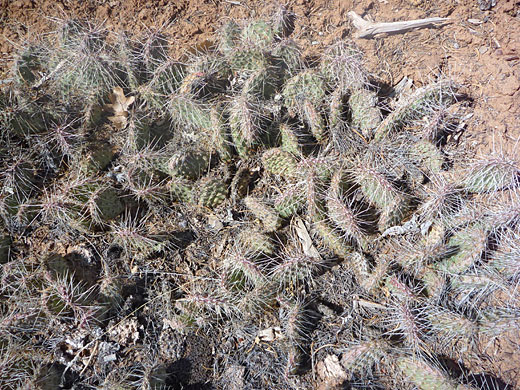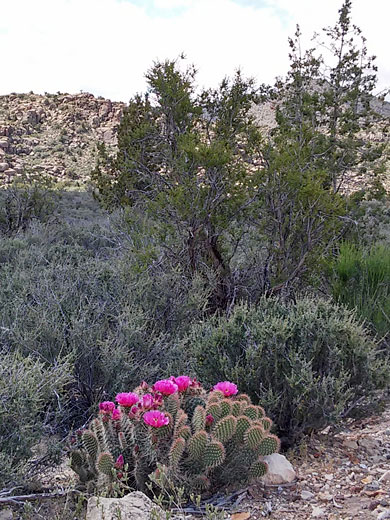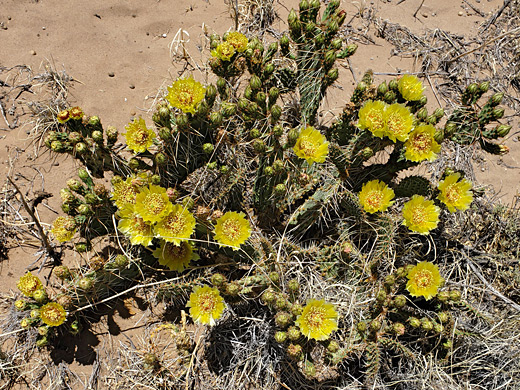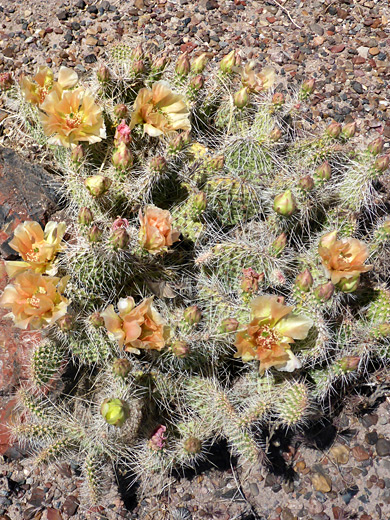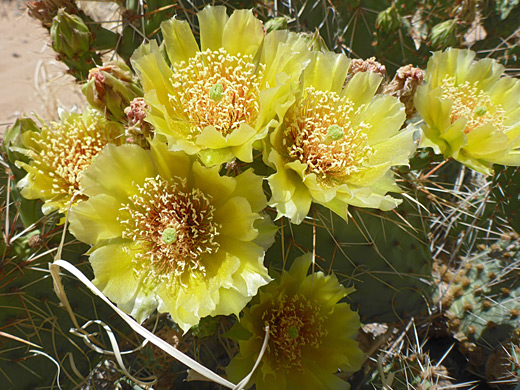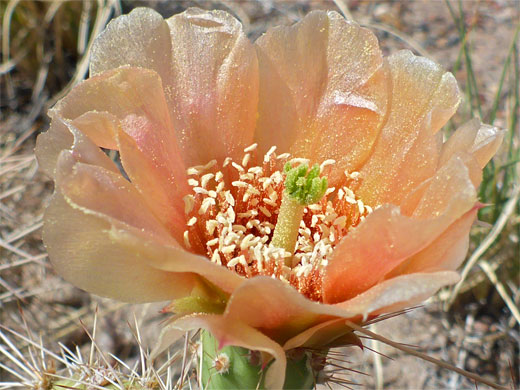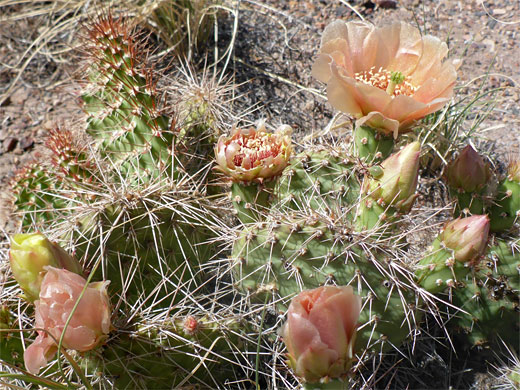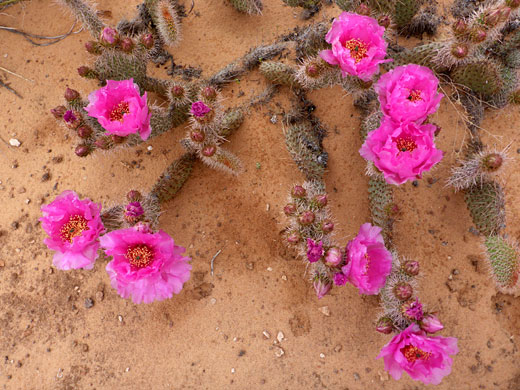Scientific name:
Opuntia polyacantha
Common name:
Plains prickly pear
Range:
All middle to high elevation regions of west and central USA, and south Canada - from 4,000 feet to over 9,000 feet
Form:
Low, spreading clusters
Habitat:
Varied; grasslands, chaparral, woodland, hillsides
Flowers:
Yellow, sometimes pink

Distribution map for opuntia polyacantha
The plains prickly pear, opuntia polyacantha, is the single most widespread cactus in the US, ranging from the Chihuahuan Desert of west Texas to the Pacific Coast, and north into Canada, where it grows in Alberta, British Columbia and Saskatchewan. The plant is less remarkable to look at, staying very close to the ground and forming untidy, spreading mats, often semi-submerged beneath the soil or partly covered by grass and leaves.
The oval, yellowish pads rarely exceed 6 inches in length, and have closely spaced areoles with clusters of spines that vary both in length and color, but are generally quite stout and dense. Longer spines (up to 3 inches) are thinner and lighter in color, while the shorter ones are thicker and darker. In some plants spines may be present only along the pad edges. Opuntia erinacea is perhaps the most similar species (and is sometimes considered a variety), present in the Southwest states, but this has spines that are more uniformly white, thin and long.
The cactus grows to widely due to its good frost tolerance; in cold conditions the plants become dormant and the water content of pads decreases, leaving the surface shrunken and wrinkled, and better able to withstand the cold. The flowers, appearing early summer, are variable in color, either yellow, light pink or reddish pink, while the inch-long fruits are brownish and very spiny.
There are five varieities of opuntia polyacantha, differentiated by spine characeristics.
The oval, yellowish pads rarely exceed 6 inches in length, and have closely spaced areoles with clusters of spines that vary both in length and color, but are generally quite stout and dense. Longer spines (up to 3 inches) are thinner and lighter in color, while the shorter ones are thicker and darker. In some plants spines may be present only along the pad edges. Opuntia erinacea is perhaps the most similar species (and is sometimes considered a variety), present in the Southwest states, but this has spines that are more uniformly white, thin and long.
The cactus grows to widely due to its good frost tolerance; in cold conditions the plants become dormant and the water content of pads decreases, leaving the surface shrunken and wrinkled, and better able to withstand the cold. The flowers, appearing early summer, are variable in color, either yellow, light pink or reddish pink, while the inch-long fruits are brownish and very spiny.
There are five varieities of opuntia polyacantha, differentiated by spine characeristics.
All Contents © Copyright The American Southwest | Comments and Questions | Contribute | Affiliate Marketing Disclosure | Site Map


